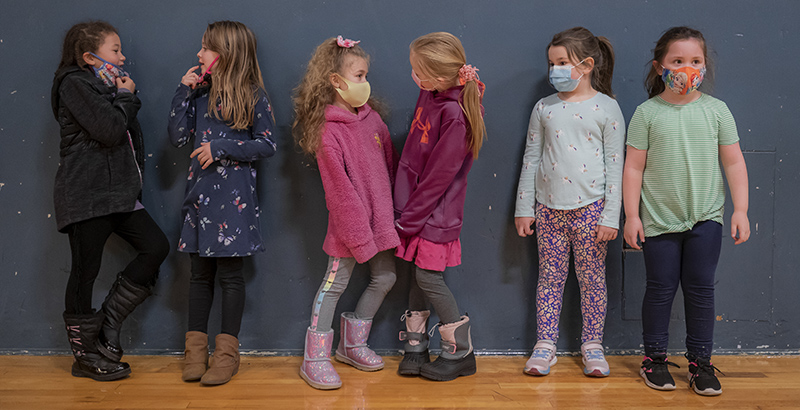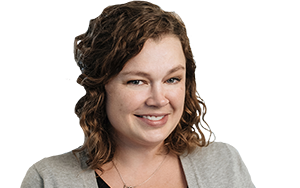One Texas Town, Two School Districts, Clashing Mask Policies: How Science and Politics Collided in New Braunfels’ Classrooms

This article was produced in partnership with The Texas Tribune.
For locals and tourists, it’s hard to overstate the charm of New Braunfels, Texas, a place of spring-fed rivers, dancehalls, and German festivals.
Yet against this idyllic backdrop, the nation’s ongoing fight over mask-wearing has pitted neighbor against neighbor and put the region’s schoolkids squarely in the middle of an overheated argument.
In what quickly became a conversation about science, personal liberty, and the role of government, the town’s two school boards, New Braunfels ISD and Comal ISD, landed on opposite sides of the face covering debate earlier this month after Gov. Greg Abbott announced the statewide mask mandate would end March 10.
In New Braunfels ISD, which serves more low income and Latino students, the school board opted to survey parents, resulting in a vote to keep the school mask mandate. The Comal ISD board, representing whiter, more rural parts of Comal county voted 5-2 in an eleventh hour meeting to make masks voluntary after members touted personal responsibility and parental choice. One Comal ISD board member, Marty Bartlett, cited the arguments of well-known conspiracy theorists and vaccine skeptics who say masks are government overreach, not sound science.
The mask battle in New Braunfels clearly has political overtones, but this isn’t your typical liberal vs. conservative fight. New Braunfels sits on the southeastern edge of Comal County, whose residents gave Donald Trump 70% of the vote in November.
In this case the fight is more about moderate conservatives vs. those on the far right.
And Comal ISD’s political leanings are already affecting students and teachers in a big way as masks disappear from classrooms, Comal ISD parents and teachers say.
Students are facing peer pressure to abandon masks. Teachers don’t know whose parents prefer for them to wear the masks. Parents who don’t want their children in class or crowded hallways with unmasked people must decide whether to go back to remote learning.
“Teachers had no time to prepare,” said Comal ISD middle school teacher and parent Kate Fraser, adding the day after the board meeting students showed up without masks. “You feel as a teacher you can’t do what you need to do to protect the kids.”
The fast-growing suburbs and exurbs of San Antonio and rural areas of the Texas Hill Country where children attend Comal ISD schools have pulled the county further to the right, while more moderate conservatives struggle to hold on to the city of New Braunfels.
“I’ve always been a conservative, still am, still vote (for) the Republican party. But the shift has been further and further and further to the right,” said Doug Miller, who represented Comal County in the Texas legislature before losing his seat to Kyle Biedermann, a far-right conservative who attended the Trump rally in Washington D.C. on the day of the January 6 insurrection.
Trump won all but one precinct in Comal County in 2020, capturing up to 79% of the vote in some precincts. His margins were widest in the rural areas in Comal ISD, and lower in New Braunfels ISD.
The two districts, both headquartered in New Braunfels, the largest city in the county, have subtle but important differences: New Braunfels ISD is majority non white students (54%) to Comal ISD’s 48%; 38% of New Braunfels ISD students qualify for free and reduced lunch, while in 30% qualify in Comal ISD.
The demographic differences between the two districts may seem small, but parents say Trumpism has had an impact on the county, and the way the two boards settled the mask debate is the perfect example. Anti-mask beliefs have become synonymous with far-right conservatism.
“I really think it was ideology and not anything else,” Valerie Garza Estes, a Comal ISD parent said of the board vote. “Listening to the board meeting, that’s perfectly clear.”
After Trump, Comal parents and students with “privilege” Estes said, “are willing to be louder and meaner and push their ideas or views without even feeling there would be consequences.”
Board members who voted to remove the mandate cited parental choice, while the two dissenting votes argued masks were critical to safe in-person learning.
“What the data shows is that after every break from school we have a lot of kids who come back who get exposed outside the school,” said trustee Russell Garner. The number goes down once kids are in school. With masks the transmission rate is “almost zero,” he said.
During the board meeting trustee Jason York argued it should be up to parents to decide how best to keep their children safe, and voted to lift the mandate.
His daughter, York said, would be wearing one. If other parents want their children attending prom, graduation, and other activities, he said, “then they’re going to continue to send their children with a mask.”
That may not be true.
Sandy Mathis, parent of three elementary school students in Comal ISD, said her family respectfully complied with the mask requirement, even though they believed that wearing masks all day had a negative effect on their children’s health and distracted them from learning.
“Now that we have been given the gift of parental choice, my kids will no longer be wearing a mask to school,” Mathis wrote in a message to The 74. Some at her children’s school have kept the mask, others have not. Some children are wearing them for a few weeks out of caution as spring breakers return.
Removing the mask mandate gives parents a choice, but not teachers who may now have to spend an entire day with maskless students, argued trustee Tim Hennessee during the board meeting. He voted to keep the mask mandate. “I think this shows a total lack of respect to the teachers.”
Of the schools he represents— in a suburban part of the district with the highest non-white population— 3/4 wanted to keep the mask mandate, he said. York countered by saying 3/4 of the campuses he represents— which are in the most rural part of the district with the highest white population— wanted to be able to choose.
A Facebook group called Open Comal County Schools Safely conducted its own survey and plans to present the results to the board at its March 25 meeting.
When asked about the overall preferences of the district, Superintendent Andrew Kim said most teachers and principals indicated they would continue to wear masks.
“It varies by certain areas of our school district, I will say that,” Kim said.
His comment — and the feedback from Hennessee’s and York’s districts — suggests the tension between conservative and ultra-conservative viewpoints exists not just between New Braunfels ISD and Comal ISD, but within Comal ISD as well.
Estes said that Trump’s racist and xenophobic rhetoric immediately showed up in Comal ISD schools in 2016, when classmates began to taunt her son about his Latina mother. During the pandemic, some students echoed Trump’s cavalier attitude, she said.
In August Board President David Drastata referred to COVID-19 using Trump’s racist “China virus” epithet in an athletic booster club email. He later apologized.
Miller described the new conservatism as uncompromising and domineering. “Their position is: if you disagree with me, you’re wrong.”
Kim expressed concern that emboldened parents with strong anti-mask views would become a distraction for teachers and principals if the district kept its own mandate without the state mandate backing it up.
“I think the last thing I would like to see is our administrators having a protracted philosophical conversation with our parents in the hallways,” said Kim.
The answer, the board decided, was simply to let those parents have their way.
Get stories like these delivered straight to your inbox. Sign up for The 74 Newsletter

;)
